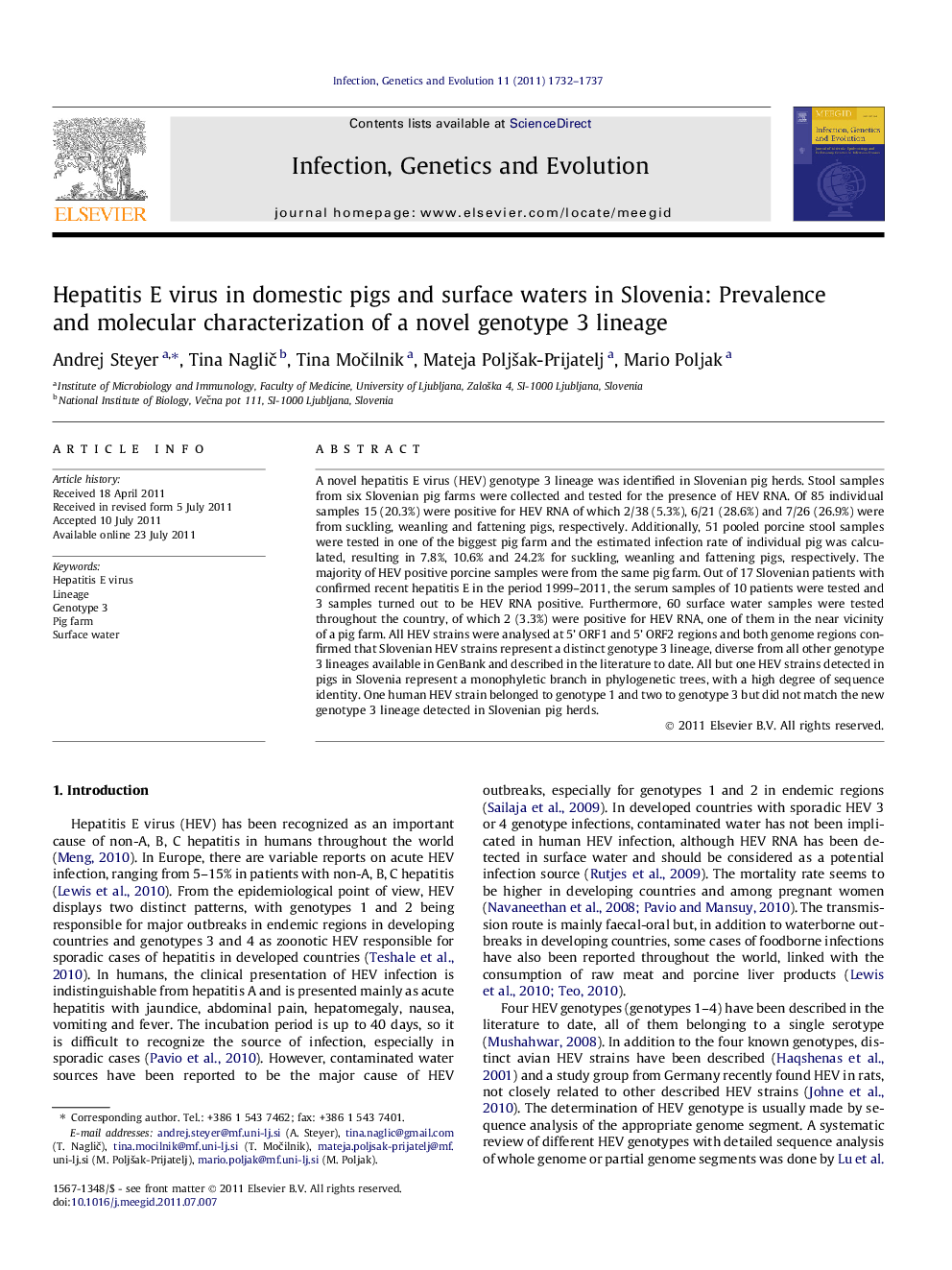| Article ID | Journal | Published Year | Pages | File Type |
|---|---|---|---|---|
| 5911587 | Infection, Genetics and Evolution | 2011 | 6 Pages |
A novel hepatitis E virus (HEV) genotype 3 lineage was identified in Slovenian pig herds. Stool samples from six Slovenian pig farms were collected and tested for the presence of HEV RNA. Of 85 individual samples 15 (20.3%) were positive for HEV RNA of which 2/38 (5.3%), 6/21 (28.6%) and 7/26 (26.9%) were from suckling, weanling and fattening pigs, respectively. Additionally, 51 pooled porcine stool samples were tested in one of the biggest pig farm and the estimated infection rate of individual pig was calculated, resulting in 7.8%, 10.6% and 24.2% for suckling, weanling and fattening pigs, respectively. The majority of HEV positive porcine samples were from the same pig farm. Out of 17 Slovenian patients with confirmed recent hepatitis E in the period 1999-2011, the serum samples of 10 patients were tested and 3 samples turned out to be HEV RNA positive. Furthermore, 60 surface water samples were tested throughout the country, of which 2 (3.3%) were positive for HEV RNA, one of them in the near vicinity of a pig farm. All HEV strains were analysed at 5' ORF1 and 5' ORF2 regions and both genome regions confirmed that Slovenian HEV strains represent a distinct genotype 3 lineage, diverse from all other genotype 3 lineages available in GenBank and described in the literature to date. All but one HEV strains detected in pigs in Slovenia represent a monophyletic branch in phylogenetic trees, with a high degree of sequence identity. One human HEV strain belonged to genotype 1 and two to genotype 3 but did not match the new genotype 3 lineage detected in Slovenian pig herds.
⺠Hepatitis E virus was described for the first time in pigs in Slovenia. ⺠A total of 85 individual and 51 pooled samples were tested with the detection rate of up to 28.6% in weanling pigs. ⺠Partial ORF 1 and ORF 2 genome regions were analysed confirming the emergence of a new genotype 3 lineage. ⺠In addition, hepatitis E viral RNA was detected in surface water samples in the near vicinity of a pig farm. ⺠Infection of pigs and humans through the environment may occur.
